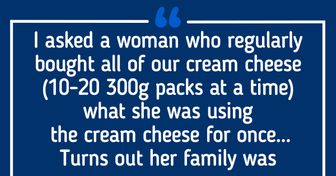22 Times Children Proved They Are the Most Talented Comedians

We’ve been lied to so many times about so many food facts that we should now start questioning everything we hear. For example, chocolate isn’t bad for you and diet soda isn’t better than actual full-calorie soda. These are only two things that many people still believe to this day. But we are here to try and bust a few myths and show a whole new world of truths about food.
Bright Side did some research and has prepared 10 interesting facts that could change your dietary choices that many people may not know about.
There are several different types of honey, but many store-bought brands aren’t what they claim to be. It’s easy to find mixtures of varieties of syrups labeled as “honey” on the shelves. This happens because highly processed honey lasts longer than natural honey. That’s why it’s important to check labels thoroughly if you want to buy the real deal and not end up with fake, processed honey.
The first thing to look out for is an ingredient list; 100% honey shouldn’t have one. Also, if you see the words “honey blend,” chances are you’re buying syrups, not honey.
Many people will opt for a salad when at a fast-food chain because they want to go for the healthy, low-calorie option. However, a simple Caesar salad has 403 calories, 21 grams of fat, 22 grams of carbs, and 30 grams of protein. On the other hand, a regular cheeseburger with a beef patty, bun, and cheese comes at 350 calories. 14 grams of that are fat, 35 grams are carbs, 6 grams are sugar, and 630 mg are salt.
In comparison, the salad has 1.150 mg of sodium, which is almost double the amount of the cheeseburger. The bottom line is that while the salad looks like the healthier choice, it contains more sodium and calories. This proves that it’s not easy to find something truly healthy at fast-food chains.
It is widely known that nuts are healthy for us, but they come with certain calories attached. In fact, some of the various types of nuts have many more calories than others. For example, just 3 Brazil nuts have 99 calories, while it takes 8 walnuts and 10 pecans to reach approximately the same number. Almost the same calories can be found in 15 almonds, 25 pistachios, or 90 pine nuts.
Basil leaves and seeds can do wonders for intestinal issues, such as digestion, bloating, gas, and spasms. It works by helping good bacteria grow in your gut and decreasing harmful bacteria that cause problems. The obvious way to use it is by adding it to your food, but you can also dilute some essential oil and massage your abdomen with it after every meal.
Did you know any of the facts mentioned above? If this is your first time hearing about them, what surprised or even shocked you the most?











